With its sweeping glaciers and granite spires, the Mont-Blanc massif is often depicted as a symbol of the high-mountain environment, a frozen realm devoid of life. And yet, as the climate in the Alps continues to warm, plants are rapidly moving upslope and gaining ground as glaciers and snowfields recede. Thirty years of satellite data show a significant “greening” trend, defined as an increase in plant cover, occurring in alpine habitats surrounding Mont Blanc. The most rapid changes in vegetation are occurring at the boundaries with snow and ice, and are in the process of transforming this emblematic high mountain landscape.

An alpine grassland in the Jardin de Talèfre, at the heart of the Mont-Blanc massif, located above the receding Talèfre Glacier. Photo: Brad Carlson
From satellites to alpine plants
At CREA Mont-Blanc, we analyzed thirty years of Landsat satellite images, from 1987 to 2017. For each year, the maximum NDVI value (NDVImax, see inset below) was extracted from summer images, representing the annual peak of plant productivity for 30x30m pixels covering the Mont-Blanc massif. We then quantified changes in NDVImax using linear regression (Figure 1B) and proportional change over time (Figure 1C). The result shows widespread increases in plant productivity and biomass, referred to as “greening”, for all high-elevation habitats of the massif and particularly above the treeline (Figure 1). Local patches of “browning”, i.e. decreased plant productivity, can also be observed, largely in urbanized areas of the valley floor and in certain forested zones.

6 processes contributing to observed greening and browning of the Mont-Blanc massif
I. Urbanization: Before the boom of the ski and mountain tourism industry in the Alps, the population of the Chamonix valley was a fraction of what it is today and the landscape consisted largely of open fields for grazing and cultivation with scattered houses and small village centers. During the past seventy years, the valley has been built up and densified, leading to decreased plant cover and therefore a “browning” trend detected by satellite, including during the last 30 years.
II. Treeline rise: Since the 1950s, the upper limit of the forest in the Mont-Blanc massif, referred to as the treeline, has moved on average 60 m upslope. Observed treeline rise in the Mont Blanc region and throughout the Alps is the result of complex interactions between climate change and land-use practices. Climate warming allows trees to find suitable habitat and establish progressively higher in elevation, while the abandonment of mountain pastures and associated land-use practices has also allowed trees to recolonize grassland habitat. At lower elevation, the proliferation of the bark beetle in a warming climate has also contributed to the decline of spruce forests in certain areas of the Chamonix valley.
III. Shrubification: Although less studied in alpine systems than in the Arctic, the same climate and land-use factors affecting tree distribution are favoring the expansion and upward migration of mountain shrubs such as green alder, rhododendron and common juniper. In addition to affecting landscape appearance, replacement of species-rich grassland by monospecific shrub canopy can cause a sharp decrease in local plant diversity (e.g. from 50 to 20 species in a 10 x 10 m plot; Anthelme et al. 2007).

Figure 1. (A) Map of current habitats in the Mont-Blanc massif (data source: J. Renaud – LECA). (B) Temporal trends in peak plant productivity (NDVImax) between 1987 and 2017. Positive values (yellow and green) represent an increase in plant productivity over time, while negative values (brown) are the result of a decrease in plant productivity. Trends for each grid cell are the result of a linear model fitted between NDVImax and year. (C) Proportional change in plant productivity (NDVImax) between two periods: P1 (1987-1993) and P2 (2011-2017). Positive values (yellow and green) values represent a proportional increase in plant productivity. Proportional increase was calculated using the log-response ratio between the mean NDVImax of the two periods (log(P2/P1)). In panels (B) and (C), blank areas correspond to non-vegetated zones lacking an NDVI signal (mean NDVImax < 0.01 during 2013-2017). Data source: Landsat 5 and 8, United States Geological Survey.
IV. Increased biomass: It is entirely possible that the same plant community, for example the alpine grassland shown in Figure 1 (IV), could benefit from a warmer and longer growing season decreased snow cover duration and produce more biomass, i.e. grow taller or produce larger leaves, without any change in species composition.
V. Thermophilization: Climate warming enables species adapted to warmer conditions to migrate upslope, resulting in a higher number of species co-occurring in high-mountain habitats and denser plant cover. Rates of alpine plant colonization appear to be highly correlated to temperature rise: for example, the rate of increase of plant species on European mountain summits was measured to be five times higher between 2007 and 2016 as compared to between 1957 and 1966 (Steinbauer et al. 2018).
VI. Glacier retreat and plant colonization: The accelerating decline of glaciers in the Alps during recent decades (Figure 2) has opened up new spaces for plants to establish and grow. Although colonization is limited by soil formation and slope-related disturbance (in addition to the usual climatic barriers), the abundance of water and lack of competition has enabled certain plant species to rapidly take advantage of these novel habitats.
Greenery at the expense of snow and ice
NASA defines the “cryosphere” as the frozen water part of the Earth system, including sea ice, lake and river ice, glaciers, snow, and permanently frozen ground (permafrost). The land cover map shown in Figure 1A shows the characteristic form of the intricate combination of glacier and granite that forms the heart of the Mont-Blanc massif, largely made up of different elements of the cryosphere. Accelerated warming is allowing plants to eat away at this boundary and gain habitat, as glaciers and snowfields recede (Figure 2).

Figure 2. Glacier surface area in 1952 (dark blue) and light blue (2008). The red dashed line in the upper-left inset represents glacier extent during the 1970s. During the last 30 years, the most spectacular changes in plant cover have occurred in areas that became deglaciated between 1952 and 2008. Data source: Institut des Géosciences de l’Environnement CNRS.
While the most rapid shifts in plant cover are occurring in the wake of glacier retreat, the phenomenon of alpine greening is clearly more widespread. One hypothesis explaining the increased productivity of alpine grasslands throughout the Mont Blanc region is also linked to the cryosphere, and is based on the decrease in seasonal snow cover duration observed during recent decades. At 2400 m in the Mont-Blanc massif, the number of days without snow on the ground has increased from around 110 in the 1970s and 80s to 140 days during the last decade (+30 days without snow; Météo-France CNRS/CEN; Durand et al. 2009a). In addition, summer temperatures have strongly increased, resulting in both longer and warmer summers (~ +2 °C since the 1980s; Météo-France CNRS/CEN; Durand et al. 2009b). For alpine plants limited by time, temperature and available solar energy, an additional month of potential growing season represents a massive windfall enabling increased photosynthesis for established plants and potentially tipping the scales in favor of more competitive and less specialized species arriving from lower elevation. On the other hand, the earlier disappearance of the insulating snowpack during the spring also increases the exposure of plants to frigid air temperatures, at a time when plant tissues are at the their most vulnerable. For certain alpine plants, earlier snowmelt has been linked to frost damage and decreased plant performance and growth (Wipf et al. 2009), which could lead to localized browning of alpine vegetation.
Looking ahead
Greener mountains have the potential to affect visitors and residents of the Alps in at least three different ways: (i) by altering landscape appearance and aesthetics, (ii) by stabilizing steep slopes left behind by glacier retreat and (iii) by regulating water run-off from high mountain catchments. There is also a risk of “landscape homogenization”, caused by increasing tree and shrub cover and the potential exclusion of alpine specialist plant species. At CREA Mont-Blanc, one of our primary research objectives is to combine field-based observations of long-term changes in mountain vegetation with satellite imagery, in order to better understand processes contributing to shifts in the Mont Blanc landscape. While there is still much to learn, thirty years of observations point to one clear conclusion: as temperatures continue to rise, we can expect an increasingly rapid transformation of this emblematic high-mountain landscape during the years ahead.

Figure 3. Changes in plant productivity on the moraine of the Tour Glacier (1987-2017). Aerial photographs provided by the Institut National de l’Information Géographique et Forestière (IGN).
References
Anthelme, F., Villaret, J. C., & Brun, J. J. (2007). Shrub encroachment in the Alps gives rise to the convergence of sub‐alpine communities on a regional scale. Journal of Vegetation Science, 18(3), 355-362.
Carlson, B. Z., Corona, M. C., Dentant, C., Bonet, R., Thuiller, W., & Choler, P. (2017). Observed long-term greening of alpine vegetation—a case study in the French Alps. Environmental Research Letters, 12(11), 114006.
Durand, Y., Giraud, G., Laternser, M., Etchevers, P., Mérindol, L., & Lesaffre, B. (2009a). Reanalysis of 47 years of climate in the French Alps (1958–2005): climatology and trends for snow cover. Journal of applied meteorology and climatology, 48(12), 2487-2512.
Durand, Y., Laternser, M., Giraud, G., Etchevers, P., Lesaffre, B., & Mérindol, L. (2009b). Reanalysis of 44 yr of climate in the French Alps (1958–2002): methodology, model validation, climatology, and trends for air temperature and precipitation. Journal of Applied Meteorology and Climatology, 48(3), 429-449.
Myers-Smith, I. H., Forbes, B. C., Wilmking, M., Hallinger, M., Lantz, T., Blok, D., … & Boudreau, S. (2011). Shrub expansion in tundra ecosystems: dynamics, impacts and research priorities. Environmental Research Letters, 6(4), 045509.
Steinbauer, M. J., Grytnes, J. A., Jurasinski, G., Kulonen, A., Lenoir, J., Pauli, H., … & Bjorkman, A. D. (2018). Accelerated increase in plant species richness on mountain summits is linked to warming. Nature, 556(7700), 231.
Wipf, S., Stoeckli, V., & Bebi, P. (2009). Winter climate change in alpine tundra: plant responses to changes in snow depth and snowmelt timing. Climatic change, 94(1-2), 105-121.
Written by: Brad Carlson, CREA Mont-Blanc – January, 2019. In collaboration with the Laboratoire d’Ecologie Alpine (LECA).
For more information:
Climate change and long-term changes in vegetation in the French Alps:
AGATE 2018 Bilan Climatique (in French)
Observed long-term greening of alpine vegetation—a case study in the French Alps (article in English)
This project is funded by the European Union. Europe is committed to action in the Alpine Massif through the European Regional Development Fund.


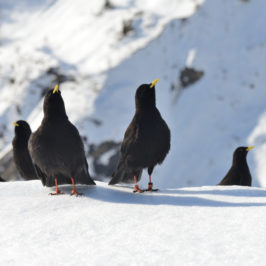
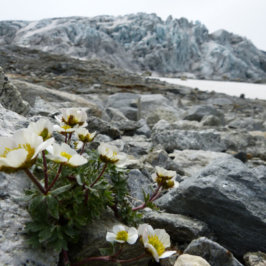
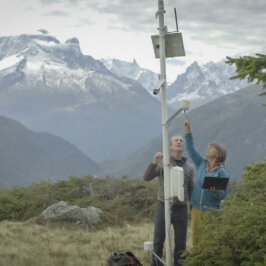
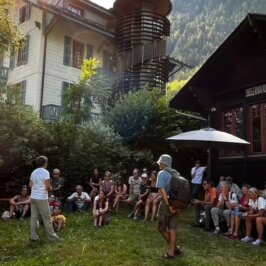
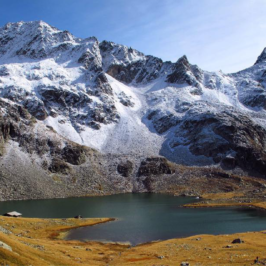
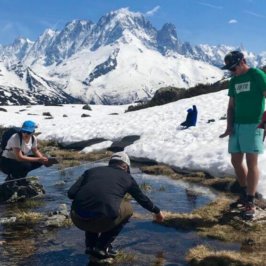
Leave a Reply